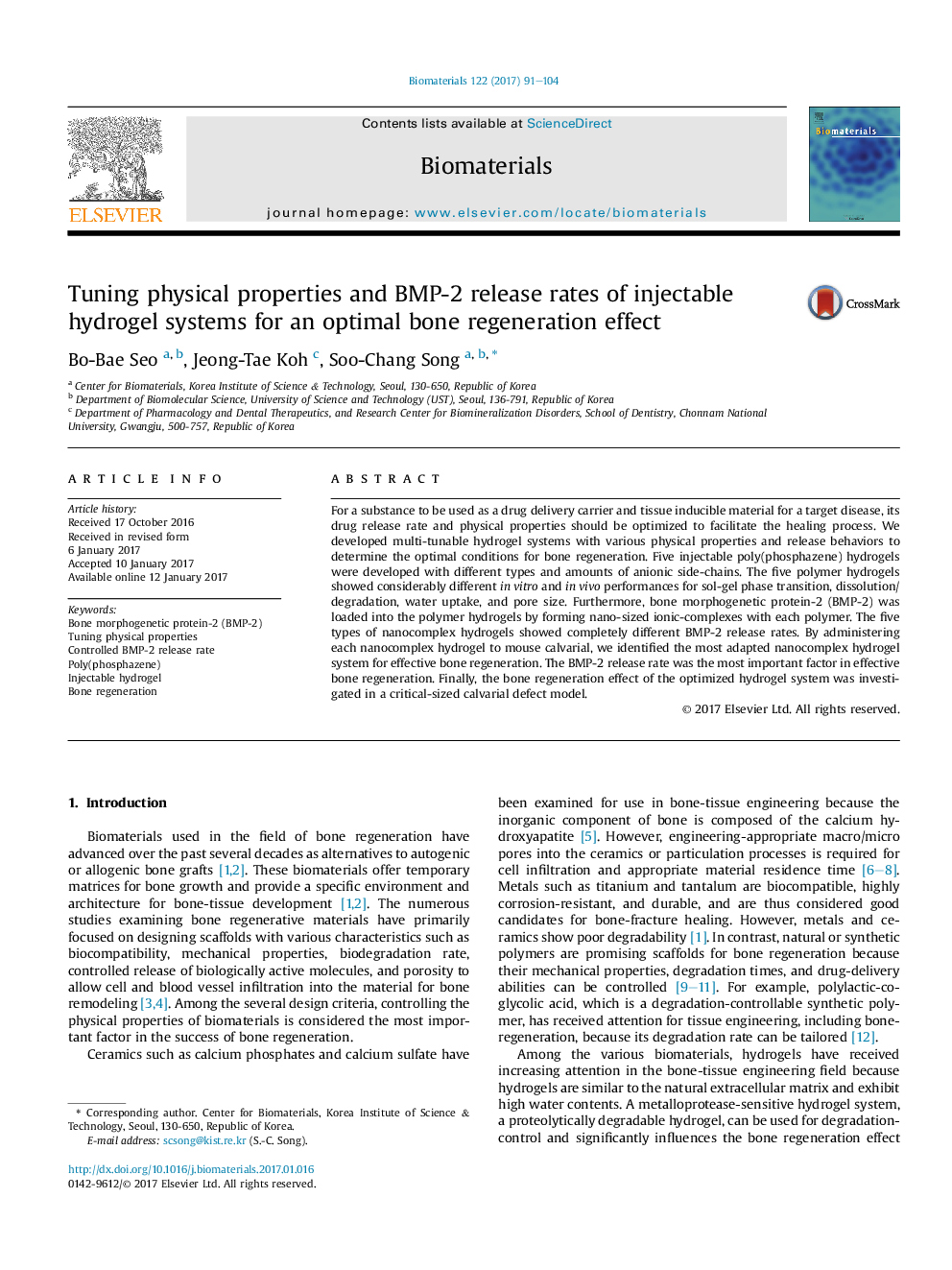| Article ID | Journal | Published Year | Pages | File Type |
|---|---|---|---|---|
| 6450883 | Biomaterials | 2017 | 14 Pages |
For a substance to be used as a drug delivery carrier and tissue inducible material for a target disease, its drug release rate and physical properties should be optimized to facilitate the healing process. We developed multi-tunable hydrogel systems with various physical properties and release behaviors to determine the optimal conditions for bone regeneration. Five injectable poly(phosphazene) hydrogels were developed with different types and amounts of anionic side-chains. The five polymer hydrogels showed considerably different in vitro and in vivo performances for sol-gel phase transition, dissolution/degradation, water uptake, and pore size. Furthermore, bone morphogenetic protein-2 (BMP-2) was loaded into the polymer hydrogels by forming nano-sized ionic-complexes with each polymer. The five types of nanocomplex hydrogels showed completely different BMP-2 release rates. By administering each nanocomplex hydrogel to mouse calvarial, we identified the most adapted nanocomplex hydrogel system for effective bone regeneration. The BMP-2 release rate was the most important factor in effective bone regeneration. Finally, the bone regeneration effect of the optimized hydrogel system was investigated in a critical-sized calvarial defect model.
